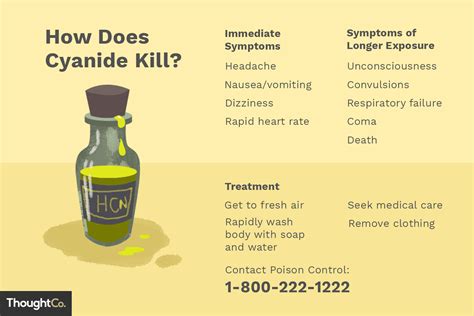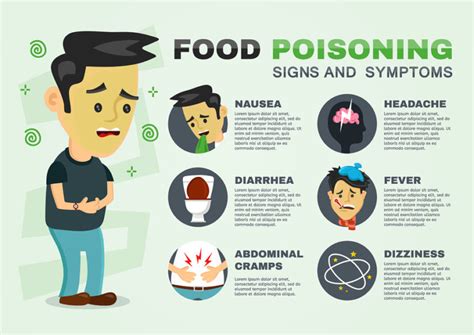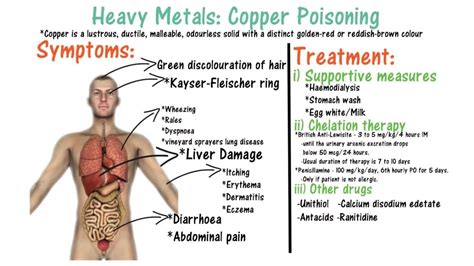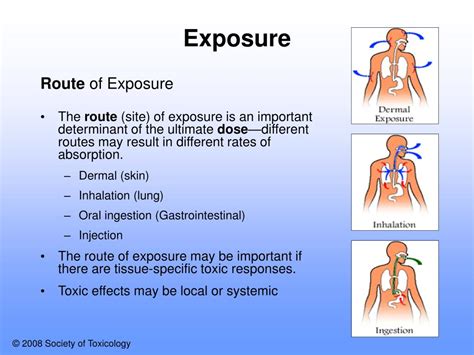
Cyanide Poisoning
What is Cyanide Poisoning?
Cyanide poisoning is a condition that occurs when a person is exposed to high levels of cyanide. Cyanide is a highly toxic compound that can be found in various forms, including gas, liquid, and solid. It is commonly used in industries such as mining, metal processing, and electroplating, but can also be found in certain foods and plants. The ingestion, inhalation, or absorption of cyanide into the body can lead to severe health consequences and even death.
There are several ways in which cyanide can enter the body. One of the most common routes of exposure is through inhalation of cyanide gas. This can occur in industrial settings where cyanide is used, and the gas is released into the air. Another way cyanide can enter the body is through ingestion. This can happen if someone accidentally consumes a product that contains cyanide or intentionally ingests it as a means of self-harm. Finally, cyanide can also be absorbed through the skin, although this is less common.
The symptoms and signs of cyanide poisoning can vary depending on the level and duration of exposure. Initially, individuals may experience headache, dizziness, confusion, and rapid breathing. As the poisoning progresses, symptoms can worsen and include seizures, loss of consciousness, and cardiac arrest. Cyanide acts by interfering with the body’s ability to use oxygen, which can quickly lead to serious complications.
- Rapid breathing
- Headache
- Dizziness
- Confusion
- Seizures
- Loss of consciousness
- Cardiac arrest
In cases of suspected cyanide poisoning, immediate action should be taken to minimize further exposure and seek medical help. If the person is conscious, they should be moved to an area with fresh air and away from the source of cyanide. It is important not to delay seeking medical attention, as prompt treatment can greatly improve the chances of survival.
Treatment options for cyanide poisoning may include the administration of specific antidotes that bind to and neutralize the cyanide in the body. Oxygen therapy and supportive care, such as intravenous fluids and medications to stabilize blood pressure and heart function, may also be provided. The specific treatment approach will depend on the severity of the poisoning and the individual’s overall condition.
| Symptoms and Signs | Immediate Steps to Take | Treatment Options |
|---|---|---|
| Headache | Move to fresh air and seek medical help | Administration of specific antidotes |
| Dizziness | Avoid further exposure | Oxygen therapy |
| Confusion | Provide supportive care | Intravenous fluids |
Overall, cyanide poisoning is a serious medical emergency that requires immediate attention. Recognizing the symptoms, taking immediate steps to minimize exposure, and seeking prompt medical help can greatly increase the chances of a positive outcome. It is important to be aware of potential sources of cyanide and take necessary precautions to prevent accidental exposure.
How Does Cyanide Enter the Body?
Cyanide is a highly toxic substance that can enter the body through various means. Understanding how cyanide enters the body is crucial in preventing and managing cyanide poisoning. In this blog post, we will explore the different ways in which cyanide can enter the body and the potential consequences of exposure.
Inhalation: Inhalation is one of the primary routes through which cyanide can enter the body. When cyanide compounds or cyanide-containing substances are volatilized, they can be rapidly absorbed through the respiratory system. This commonly occurs in industrial settings where cyanide is used, such as in mining, metal processing, and pharmaceutical manufacturing.
Ingestion: Another way cyanide can enter the body is through ingestion. Accidental ingestion of cyanide-containing substances, such as certain chemicals, pesticides, or contaminated food or water, can lead to cyanide poisoning. It is important to note that some seeds and plants, such as apple seeds and cassava, naturally contain cyanide compounds and can be toxic if consumed in large quantities.
Absorption: Cyanide can also enter the body by direct absorption through the skin or mucous membranes. Although this route of entry is less common compared to inhalation and ingestion, it can still occur through contact with certain cyanide-containing substances. For instance, handling potassium cyanide or sodium cyanide without proper protective measures can result in absorption through the skin, leading to cyanide poisoning.
It is important to take immediate action in cases of suspected cyanide exposure, as time plays a critical role in preventing severe toxicity. Understanding the ways in which cyanide can enter the body allows for better protection and awareness in potentially hazardous environments. By being vigilant and taking necessary precautions, we can reduce the risks associated with cyanide exposure and safeguard our well-being.
| Cyanide Entry Routes | Potential Consequences |
|---|---|
| Inhalation | Rapid respiratory absorption, affects the cardiovascular and central nervous systems |
| Ingestion | Toxicity can vary depending on the quantity and concentration of cyanide ingested |
| Absorption | Possible absorption through skin or mucous membranes, leading to systemic effects |
Being aware of the various routes through which cyanide can enter the body empowers individuals to take appropriate precautions in potentially hazardous situations. Whether it is ensuring proper ventilation and safety measures in industries that use cyanide or practicing caution while handling cyanide-containing substances, proactive measures can significantly reduce the chances of cyanide poisoning. Remember, prevention is always better than the cure, especially when it comes to dealing with highly toxic substances like cyanide.
Symptoms and Signs of Cyanide Poisoning
Cyanide poisoning is a serious condition that occurs when a person ingests, inhales, or comes into contact with cyanide, a highly toxic chemical compound. The symptoms and signs of cyanide poisoning can vary depending on the method of exposure and the amount of cyanide that enters the body. It is important to be aware of these symptoms and signs to ensure prompt medical attention and treatment.
There are several notable symptoms and signs that may indicate cyanide poisoning. One of the most common symptoms is difficulty in breathing. Cyanide interferes with the body’s ability to use oxygen, which can lead to rapid and shallow breathing or even respiratory arrest. Other respiratory symptoms may include shortness of breath, chest pain, and coughing. In severe cases, cyanide poisoning can cause seizures, loss of consciousness, and even cardiac arrest.
In addition to respiratory symptoms, cyanide poisoning can also affect other systems of the body. Gastrointestinal symptoms such as nausea, vomiting, and abdominal pain may occur. Cyanide can also disrupt the normal functioning of the central nervous system, leading to dizziness, confusion, and headache. Some individuals may also experience a rapid heart rate, high blood pressure, or irregular heart rhythms.
It is important to note that the symptoms of cyanide poisoning can occur rapidly, often within minutes to hours after exposure. However, the severity of symptoms can vary depending on the amount of cyanide that enters the body. In cases of acute cyanide poisoning, where a large amount of cyanide is ingested or inhaled, symptoms may be more severe and can rapidly progress.
In conclusion, recognizing the symptoms and signs of cyanide poisoning is crucial for immediate medical intervention. If you suspect someone may be experiencing cyanide poisoning, it is important to seek emergency medical help right away. Remember to use caution and prioritize safety when handling chemicals or substances that may contain cyanide to prevent accidental exposure.
Immediate Steps to Take in Cyanide Poisoning
Cyanide poisoning is a severe medical emergency that requires prompt action to prevent further harm. If you suspect someone has been exposed to cyanide, it is crucial to act quickly and take immediate steps to mitigate the effects of the poison. Here are three essential measures to take in cases of cyanide poisoning:
- Move to a Safe Area: The first step is to remove the person from the source of cyanide exposure, if possible. If the poisoning occurred indoors, quickly open windows and doors to ventilate the area and eliminate the toxic fumes. Ensure your own safety by wearing protective gloves and a mask before handling the affected individual.
- Call Emergency Services: Dial the emergency hotline in your country and explain the situation to the operator. Provide details about the suspected cyanide exposure and the person’s condition. Remain calm and follow any instructions given by the operator. They may advise you on the next course of action or provide guidance on how to administer first aid until medical help arrives.
- Perform Basic Life Support: While waiting for medical professionals to arrive, initiate basic life support if the person is unresponsive. Check for their breathing and pulse, and if necessary, start cardiopulmonary resuscitation (CPR). Only perform CPR if you are trained in the procedure and confident in your abilities.
Remember, time is of the essence in cases of cyanide poisoning. Every second counts, and swift action can significantly increase the chances of a positive outcome. By following these immediate steps, you can potentially save a life or prevent further harm from cyanide poisoning.
Treatment Options for Cyanide Poisoning
Cyanide poisoning is a serious condition that requires immediate medical attention. It occurs when a person is exposed to high levels of cyanide, either through inhalation, ingestion, or absorption through the skin. Cyanide is a highly toxic substance that interferes with the body’s ability to use oxygen. If left untreated, cyanide poisoning can be fatal. Therefore, it is crucial to be aware of the treatment options available in case of cyanide poisoning.
1. Oxygen Therapy: One of the primary treatment options for cyanide poisoning is to administer oxygen. This helps to increase the oxygen levels in the body and counteract the effects of cyanide. High-flow oxygen through a mask or a breathing tube may be used to ensure a sufficient oxygen supply to the tissues.
2. Hydroxocobalamin: Another effective treatment option for cyanide poisoning is the administration of hydroxocobalamin. This medication works by binding to cyanide and forming a non-toxic compound that can be excreted from the body. Hydroxocobalamin is typically given intravenously and is considered a first-line treatment option for severe cases of cyanide poisoning.
3. Sodium Thiosulfate: Sodium thiosulfate is also used as a treatment for cyanide poisoning. It works by converting cyanide into a less toxic form called thiocyanate, which can be easily eliminated from the body. Sodium thiosulfate is often administered in combination with other treatments, such as oxygen therapy or hydroxocobalamin.
| Treatment Options for Cyanide Poisoning |
|---|
| 1. Oxygen Therapy |
| 2. Hydroxocobalamin |
| 3. Sodium Thiosulfate |
It is important to note that the specific treatment approach may vary depending on the severity of the cyanide poisoning and the individual’s overall health condition. In some cases, other treatments such as hyperbaric oxygen therapy or the use of antidotes like dicobalt edetate or dimethylaminophenol may be considered.
If you or someone you know is experiencing symptoms of cyanide poisoning, it is crucial to seek immediate medical attention. Do not try to treat cyanide poisoning at home, as it requires specialized medical care. Remember, prompt treatment can make a significant difference in the outcome of cyanide poisoning cases.
Frequently Asked Questions
1. What is cyanide poisoning?
Cyanide poisoning is a condition that occurs when high levels of cyanide, a highly toxic chemical, enter the body, interfering with the normal functioning of cells and organs.
2. How does cyanide enter the body?
Cyanide can enter the body through inhalation of smoke or fumes, ingestion of cyanide-containing substances, or absorption through the skin.
3. What are the symptoms and signs of cyanide poisoning?
The symptoms of cyanide poisoning may include headache, dizziness, confusion, shortness of breath, rapid breathing, nausea, vomiting, seizures, and loss of consciousness. In severe cases, it can lead to cardiac arrest and death.
4. What immediate steps should be taken in cyanide poisoning?
If cyanide poisoning is suspected, it is important to remove the person from the source of cyanide exposure, provide them with fresh air, and call emergency services immediately. Performing CPR may be necessary if the person’s breathing or heart stops.
5. What are the treatment options for cyanide poisoning?
Treatment for cyanide poisoning usually involves administration of an antidote called hydroxocobalamin. In some cases, treatments such as oxygen therapy, IV fluids, and medications to support blood pressure and heart function may also be necessary.
6. Can cyanide poisoning be fatal?
Yes, cyanide poisoning can be fatal, especially if not treated promptly. The severity of the poisoning and the individual’s overall health play a role in determining the outcome.
7. Are there long-term effects of cyanide poisoning?
While immediate treatment is necessary to prevent fatalities, some individuals who survive cyanide poisoning may experience long-term neurological damage, such as cognitive impairment or movement disorders.


